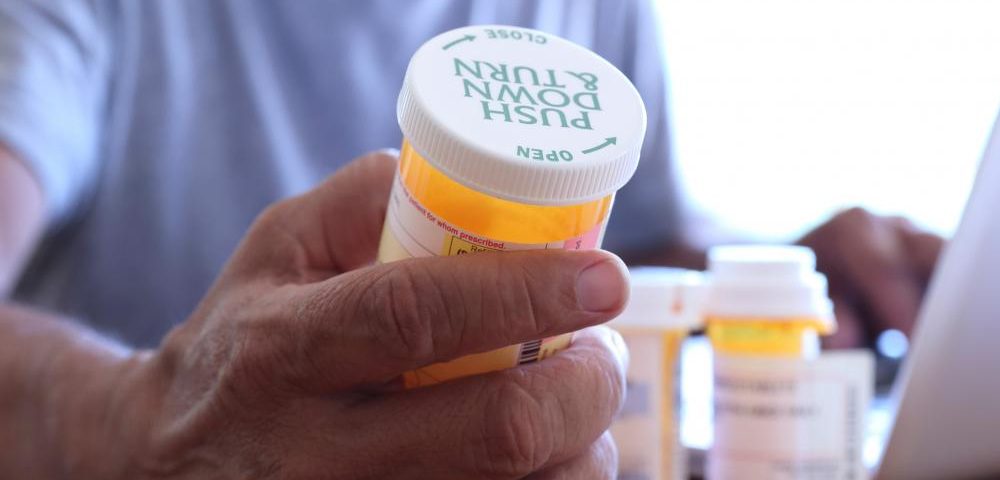Xanax is a medication used to treat panic and anxiety disorders and falls in the category of drugs known as benzodiazepines. It produces a calming effect by reducing any stimulative signaling in the central nervous system. Taking Xanax for extended periods can cause physical dependence in users and if they reduce or stop their dose, it can lead to withdrawal.
 Xanax withdrawal is typically an uncomfortable process. It can be dangerous in rare situations even causing seizures. Other withdrawal symptoms include rebound anxiety, muscle cramps, and insomnia. Anyone who wants to stop taking Xanax should think of going through supervised medical treatment or talking to a healthcare provider about stopping.
Xanax withdrawal is typically an uncomfortable process. It can be dangerous in rare situations even causing seizures. Other withdrawal symptoms include rebound anxiety, muscle cramps, and insomnia. Anyone who wants to stop taking Xanax should think of going through supervised medical treatment or talking to a healthcare provider about stopping.
There are various treatment methods for Xanax withdrawal including partial hospitalization, intensive outpatient, detox centers, and inpatient programs. Recovering Xanax users who are going through withdrawal can use over-the-counter medications and antidepressants to help them deal with the symptoms. Treatment typically includes gradually decreasing the dosage or tapering. Individuals suffering from Xanax addiction typically go through detox as the initial phase of recovery followed by additional treatment to help them stay sober and avoid relapse.
Partial Hospitalization Program
This is an outpatient program that offers supervised medical care and recovery services. They help individuals with abstinence and recovery by getting them through the withdrawal process. Such programs need the user to commit up to 20 hours weekly.
Intensive Outpatient
These outpatient programs provide patients with an intensive type of treatment. The person going through withdrawal will receive care from medical staff while going for several scheduled counseling sessions weekly. They can be grouped or individual counseling sessions and they are focused on promoting abstinence and recovery from drugs.
Outpatient
These detox programs provide medical supervision and treatment, but the patient will not be admitted to the facility. The individual usually sees a healthcare provider or physician who provides medical advice and drugs to help with the management of withdrawal symptoms.
Inpatient
Most inpatient treatment facilities provide detox services and around-the-clock medical supervision for people who are going through Xanax withdrawal. Once the individual completes their detox, they can go into an addiction treatment program. These programs typically include recovery activities such as 12-step meetings, relapse prevention, therapy, and substance abuse education.
Detox Facilities
Such programs offer medical supervision for people experiencing Xanax detox. The medical staff in these facilities treat underlying medical conditions and prescribe drugs to ensure patients are comfortable all through the process. Usually, patients who finish detox proceed with additional treatment.
Medications to Help With Xanax Withdrawal
 Normally, people taper off Xanax gradually but they can also use drugs to manage some of the withdrawal symptoms they experience. A doctor can prescribe over-the-counter medications to help with symptoms like vomiting, diarrhea, and headache.
Normally, people taper off Xanax gradually but they can also use drugs to manage some of the withdrawal symptoms they experience. A doctor can prescribe over-the-counter medications to help with symptoms like vomiting, diarrhea, and headache.
Research also indicates that Flumenazil can minimize withdrawal symptoms from benzodiazepines. However, there is still more data required to conclude if it can be widely used to treat benzodiazepine withdrawal.
Antidepressant medications like SSRIs or selective serotonin reuptake inhibitors can be given to patients with depression who are going through Xanax withdrawal. Examples of SSRIs include paroxetine (Paxil) and fluoxetine (Prozac).
Other medications that can be used to reduce Xanax withdrawal symptoms include Clonidine, trazodone, valproate, or carbamazepine.
Clonidine is commonly used to manage tremors and other autonomic symptoms of withdrawal. Trazodone, valproate, and carbamazepine are sedatives and anticonvulsants used to decrease these symptoms in people with mild dependence. However, on their own, these drugs might not be as efficient for alleviating symptoms in people with serious withdrawal. They can be more beneficial when used together with long-acting benzodiazepines or phenobarbitals.
Xanax withdrawal medications can also include other benzodiazepine drugs. Individuals with an addiction to short-acting benzodiazepines like Xanax can be given longer-acting benzodiazepines during withdrawal then gradually tapered off them. This helps them minimize the intensity of their withdrawal symptoms and preserve their quality of life.
Tapering off Xanax
Everyone reacts differently to tapering and the timeline varies for each individual. Working with a healthcare provider during the tapering process is the safest way to go about it. There is the Xanax taper schedule, the alternative long-acting benzodiazepine taper, and the long-acting benzodiazepine substitute taper.
Xanax Detox at Home
 Detoxing at home is another alternative for individuals who do not want to go through inpatient treatment. Such programs are fully conducted at the patient’s residence. In-home rehab allows people to go through with rehabilitation while continuing with their regular daily schedules. However, this type of treatment might not be the best option for people with a serious Xanax addiction as they would need constant monitoring and attention from medical staff.
Detoxing at home is another alternative for individuals who do not want to go through inpatient treatment. Such programs are fully conducted at the patient’s residence. In-home rehab allows people to go through with rehabilitation while continuing with their regular daily schedules. However, this type of treatment might not be the best option for people with a serious Xanax addiction as they would need constant monitoring and attention from medical staff.
It might be convenient to go through Xanax withdrawal at home, but there are serious risks involved. Without medical supervision, benzodiazepine withdrawal may be dangerous and the risk of relapse is high. Unsupervised Xanax withdrawal can lead to irritability, rebound anxiety, and depression which can present suicidal thoughts or self-harm, among other mental health problems.
Other unwanted physical symptoms include:
- Muscle cramps
- Vomiting and nausea
- Heart palpitations
- Blurred vision
- Seizures
- Tremors
Home Remedies
There are also studies suggesting that herbal or nutraceutical medicines are helpful for patients who are experiencing Xanax abuse withdrawal.
Some effective home remedies to consider for Xanax withdrawal symptoms include:
- Exercise and meditation, which can help to reduce stress at this time
- Chamomile and passionflower, which can be beneficial for reducing mood swings and sleep disruptions
- Support from healthcare professionals, family, and friends to make sure detox goes accordingly
It can be challenging trying to handle the Xanax withdrawal symptoms alone. This is why the safest thing to do is detox in a recovery program with medical staff who can monitor any symptoms you are experiencing.
